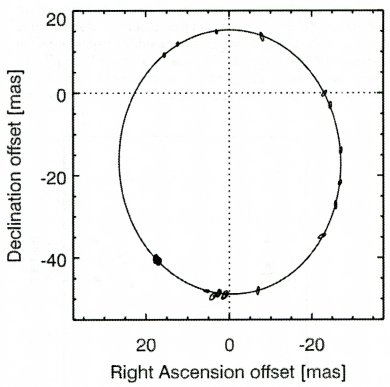
 |
The A8 dwarf Phi Herculis B orbits its more massive B8 mercury-manganese dwarf companion every 1.55 years at an average separation of 32 milliseconds of arc, which at a distance of 227 light years translates into a mean physical separation of 2.23 Astronomical Units. In reality, the two orbit each other about a common center of mass. From an article by R. T. Zavala et. al in the Astrophysical Journal, vol 655, p. 1046, 2007). |